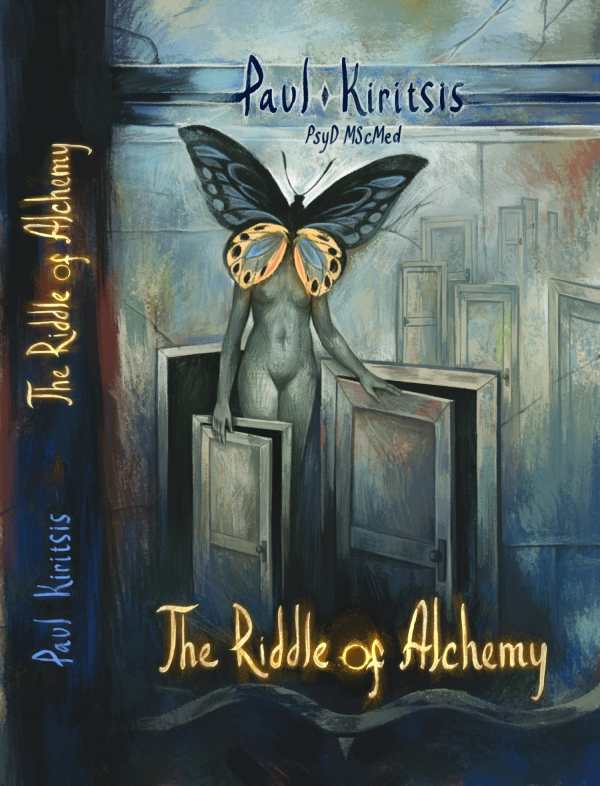The Riddle of Alchemy
The Riddle of Alchemy is a dense and lavish text that elucidates a storied natural philosophy and protoscience, showing its creative influence on modern psychology.
Paul Kiritsis’s intricate text The Riddle of Alchemy surveys an esoteric field and enduring fascination with it.
The etymology and ancient roots of alchemy are covered early in the book, beginning with Bolus of Mendes in Egypt and following through medieval Europe. A discipline with mystical and philosophical connections, it connected to pragmatic searches for gold and sought to explain the material and celestial worlds. But alchemy was also a complex, sometimes secretive practice, rife with symbols and notations. It was influenced by Hellenistic culture and tied to “chemical arts and the metallurgical crafts.” Only later, the book says, were more abstract notions absorbed into alchemy, including transmutation, prima materia, and human relationships to the whole of the cosmos. The influences of Hermeticism, Plato, and Aristotle are noted alongside Christian objections to the practice.
The book’s thematic chapters are divided into three parts: “Histories,” “The Processes of the Mind,” and “The Noetic Science.” Together, they trace some of alchemy’s key developments while adding fresh insights. And, though admitting to the possible “conceptual anachronism” that is involved in looking at alchemy from the perspective of psychology, the book is also enthusiastic about the interdisciplinary angle of its inquiries. Some ideas recur in parceled stages, as with the book’s coverage of the philosopher’s stone; the book’s organization feels winding as a result.
Though the tone is inviting to subject neophytes throughout, prior familiarity with alchemy and ancient history is useful, as erudite language and rich references to specialized global texts characterize several passages that explain how these texts set the groundwork for ideas in later periods. When the book’s focus turns to historical figures, though—including Paracelsus, Jacob Boehme, and Carl Jung—its abstract work feels more grounded. Engravings and illustrations from alchemical tracts and treatises further enliven the book; these are colorful glimpses of alchemy’s recurrent themes, including around the sun and the moon. Also included are illustrative plates from Splendor Solis, alongside essays describing the artwork in clear terms and applying psychological concepts to interpret their compositions. Here, the book’s sometimes tenuous connections of alchemy to psychology are at their most convincing.
The history book The Riddle of Alchemy elucidates a storied natural philosophy and protoscience, showing its creative influence on modern psychology.
Reviewed by
Karen Rigby
Disclosure: This article is not an endorsement, but a review. The publisher of this book provided free copies of the book and paid a small fee to have their book reviewed by a professional reviewer. Foreword Reviews and Clarion Reviews make no guarantee that the publisher will receive a positive review. Foreword Magazine, Inc. is disclosing this in accordance with the Federal Trade Commission’s 16 CFR, Part 255.

